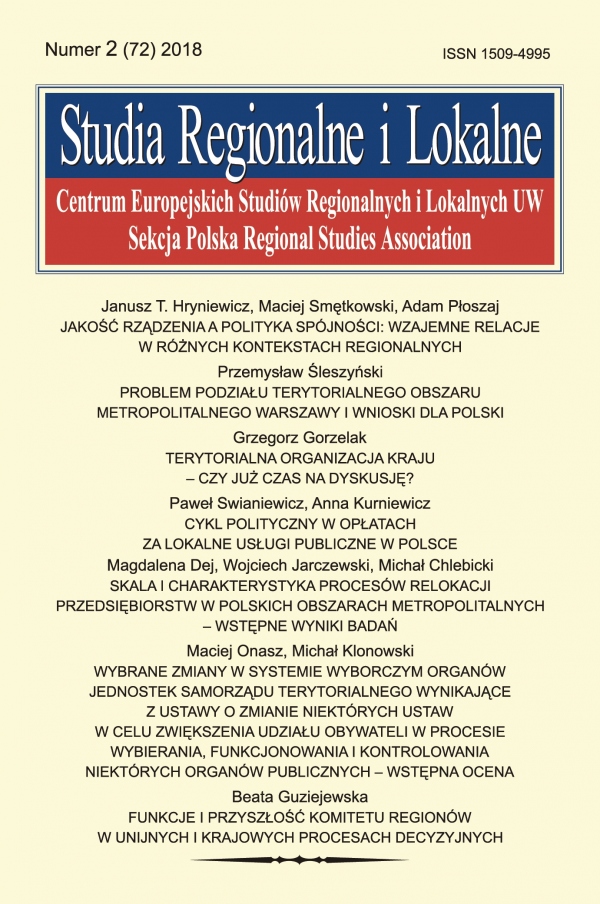Issue:
2(72)/2018
Przemysław Śleszyński
The problem of territorial division of the Warsaw Metropolitan Area and its implications for Poland
DOI: 10.7366/1509499527202
Problem podziału terytorialnego Obszaru Metropolitalnego Warszawy i wnioski dla Polski
Cel artykułu jest dyskusyjny. Przedstawiono w nim główne wnioski z opracowania wykonanego w marcu 2017 r. dla Biura Analiz i Ekspertyz Senatu RP na temat zasadności zmian w podziale terytorialnym Obszaru Metropolitalnego Warszawy. W opracowaniu tym dokonano syntezy prowadzonych przez autora badań nad rozwojem Warszawy i województwa, m. in nad oddziaływaniem stolicy i delimitacją jej obszaru funkcjonalnego. W podsumowaniu sformułowano najważniejsze wnioski, argumentujące za znalezieniem kompromisowego rozwiązania, które będzie miało na celu powołanie nowego tworu administracyjnego, uwzględniającego zarówno dzienny system miejski oraz potrzeby spójności przestrzennej, jak i interesy mieszkańców i przedsiębiorców. Ze względu na znaczenie Obszaru Metropolitalnego Warszawy, w tym stołeczność, wnioski mają zastosowanie dla całego kraju.
The problem of territorial division of the Warsaw Metropolitan Area and its implications for Poland
The purpose of the article is open to debate. It presents the main conclusions from a study made in March 2017 for the Office of Analysis and Expertise of the Senate of the Republic of Poland on the merits of changes in the territorial division of the Warsaw Metropolitan Area. In this study was carried out a synthesis of the research conducted mainly by the author on the development of Warsaw Metropolitan Area and the Mazowieckie voivodship, including the impact of the capital and delimitation of its functional urban area. In its summary were formulated the most important conclusions, arguing for finding a compromise solution, aimed at establishing a new administrative division system, taking into account both the daily urban system, spatial cohesion needs, and the interests of residents and entrepreneurs. Due to the importance of the area, including Warsaw’s functions as a capital city, the conclusions apply to the whole Poland.
Affiliation:
Przemysław Śleszyński: Instytut Geografii i Przestrzennego Zagospodarowania PAN, ul. Twarda 51/55, 00-818 Warszawa;
psleszyn@twarda.pan.pl 


